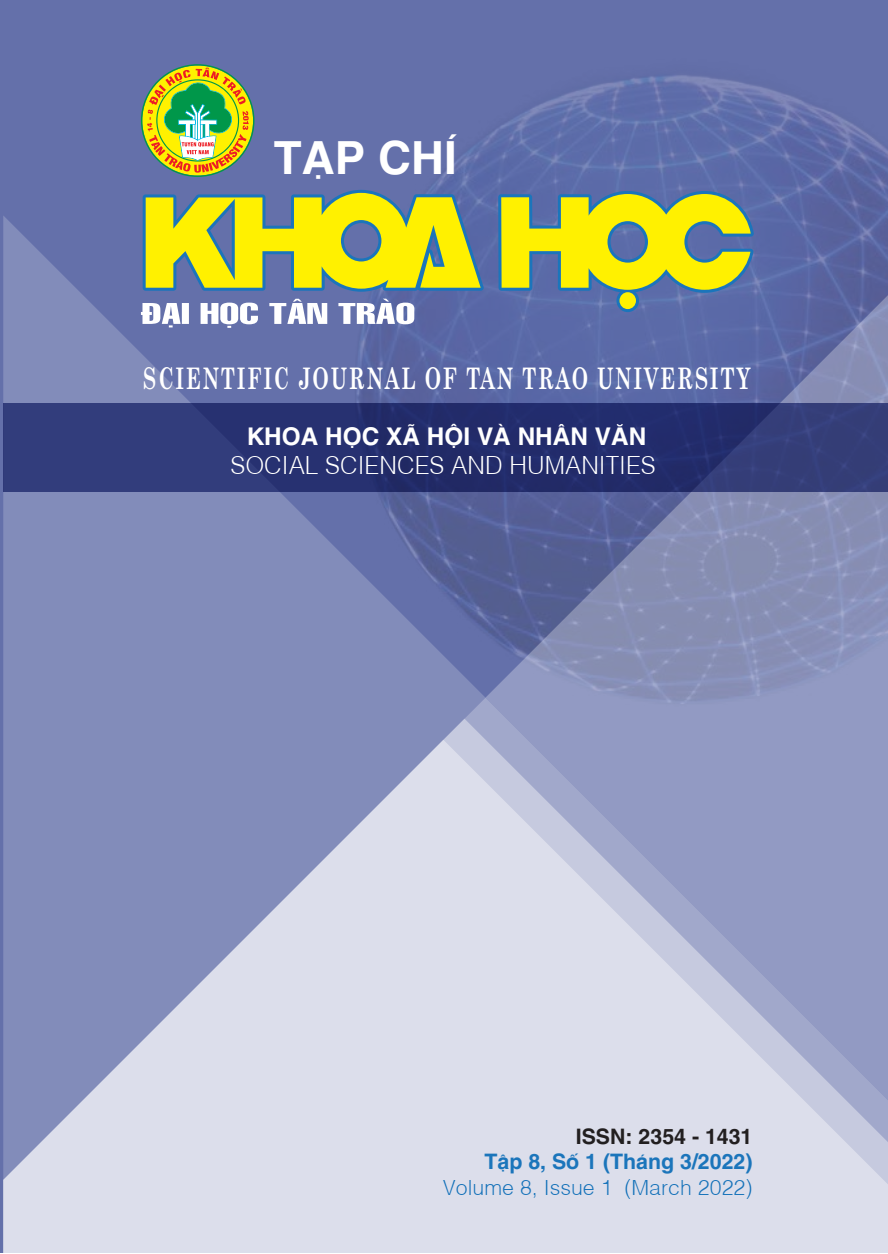THE TRADITIONAL STYLE OF CAO LAN ETHNIC’S HOUSING IN TUYEN QUANG PROVINCE
DOI:
https://doi.org/10.51453/2354-1431/2022/719Keywords:
Housing, Cao Lan people, Tuyen QuangAbstract
"Tuyen Quang is a mountainous province in the North of Vietnam with an important position in national defense, economy - society, time-honored historical and cultural tradition". There are 22 ethnic groups living together in Tuyen Quang Province, and The San Chay ethnic has a strong cultural tradition, style of housing is a kind of ethnic groups’ intangible culture in general. The traditional old house of the Cao Lan ethnic group (the San Chay ethnic group) in Tuyen Quang is sophisticated structure and decoration by their beliefs, manners and customs, distinct cultural activities. In the process of existence and development, up to now, the ancient house of the Cao Lan people has changed to suit the natural and social conditions, but the Cao Lan people in Tuyen Quang have conserved traditional culture and enrich the cultural identity of the Vietnamese nation.
Downloads
References
[1] Ngoc,P. (2006), Cultural Identity of Vietnam, Literature Publishing House, Hanoi.
[2] Thanh,P.N. (2011), Culture of ethnic minorities in Vietnam, Dan Tri Publishing House, Hanoi.
[3] Thanh ,P.N.(2011), Culture of ethnic minorities in Vietnam, Dan Tri Publishing House, Hanoi.
[4] Propaganda Department of Tuyen Quang Provincial Party Committee (2018), Tuyen Quang Dictionary, National Publishing House, Truth, Hanoi
[5] Tung,N.K. (2015), Traditional houses of Vietnamese ethnic groups (volume 1), Social Science Publishing House, Hanoi
[6] Tung,N.K. (2015), Traditional houses of Vietnamese ethnic groups (volume 2), Social Science Publishing House, Hanoi
[7] Provincial Party Committee - People's Council - People's Committee of Tuyen Quang Province (2014) Du Chi Tuyen Quang. National Publishing House, Truth, Hanoi
Downloads
Published
How to Cite
Issue
Section
License

This work is licensed under a Creative Commons Attribution-ShareAlike 4.0 International License.
All articles published in SJTTU are licensed under a Creative Commons Attribution-ShareAlike 4.0 International (CC BY-SA) license. This means anyone is free to copy, transform, or redistribute articles for any lawful purpose in any medium, provided they give appropriate attribution to the original author(s) and SJTTU, link to the license, indicate if changes were made, and redistribute any derivative work under the same license.
Copyright on articles is retained by the respective author(s), without restrictions. A non-exclusive license is granted to SJTTU to publish the article and identify itself as its original publisher, along with the commercial right to include the article in a hardcopy issue for sale to libraries and individuals.
Although the conditions of the CC BY-SA license don't apply to authors (as the copyright holder of your article, you have no restrictions on your rights), by submitting to SJTTU, authors recognize the rights of readers, and must grant any third party the right to use their article to the extent provided by the license.


